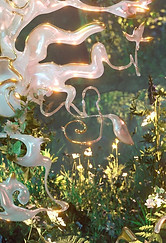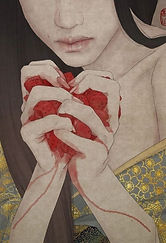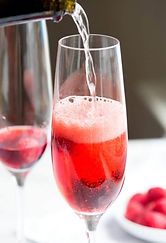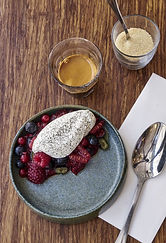









Please enjoy the experience of my menu which I created on Milanote.
In 2010, the French gastronomic meal was inscribed on UNESCO’s Representative List of the Intangible Cultural Heritage of Humanity. A pillar of French culture, the gastronomic meal represents tradition, codification, conviviality, and the relationship with food and pleasure. The gastronomic meal is a societal ritual, handed down from generation to generation. Families convene to cook; children are taught the importance of quality products, tasting different flavors, and pairing wines. It is a moment to be present and together in appreciation of good food and its labors. Reflecting on this tradition and the importance placed on the experience of food, I began ruminating on the way in which we make our choice when ordering. The process is almost clinical: a menu is provided, we read through names of dishes (which we may or may not know) and the four ingredients listed for each, and then make a decision based on what we think we know of each dish. Menus don’t do cuisine justice. They don’t tell us how mala is not just a numbing spice, but also makes the mouth salivate and crave more, or how a baguette adds the perfect amount of sweetness to bring out the savory and creamy notes of butter and jambon. The menu is a restaurant’s manifesto: the essence of its soul distilled into symbols and codes from which we glean our order and thus, our experience of the meal. If “gastronomy is neither “good” nor “haute” cuisine” but the “nomos of eating and drinking, transformed into the “art of the table” (Ory La gastronomie, 829. Translated from French), then the menu should match the artistry of the gastronomy.
I propose a more dimensional way of imparting taste and feeling: a reinvented menu which mixes prose and image. Words are powerful, but it’s also said (at least by Fred R. Barnard) that “a picture is worth a thousand words”. For me, food is a sensation, and I translate this intangible sensation into a tangible image (you could compare this to synesthesia)—a bit like Rémi in the film Ratatouille teaching his brother the pleasures of fruit and cheese (video for reference). My synesthetic menu not only honors the art of the meal but also gives its audience a more dimensional understanding of foods they may have never encountered before and thus better inform their decision making. Read left to right, the ‘menu’ gives an impression of each dish as a whole (leftmost image) and proceeds to break down each ingredient’s flavor profile.
I chose a menu from Elle magazine (and added a kir royale to complete it) to reinvent, ensuring that it conformed to the rituals of a French gastronomic meal. As according to UNESCO, the event begins with something to open the senses, whet the appetite, and build excitement for the meal to come. This may be a drink, an aperitif, or an amuse-bouche, small enough to be finished in a single bite. Next comes soup which forms a protective layer in the stomach so that it is not assaulted by strong flavors. Easily digestible, it gently softens and warms the body’s organs to prepare for digestion. Fish, meat, salad ensue, and the meal concludes with cheese and/or dessert. Of course, not every gastronomic meal has to include every element, but at the very least it must have a starter, main and dessert (bread included, obviously) to be considered a meal at all by the French.
Bonne dégustation!
Chloe Chanren